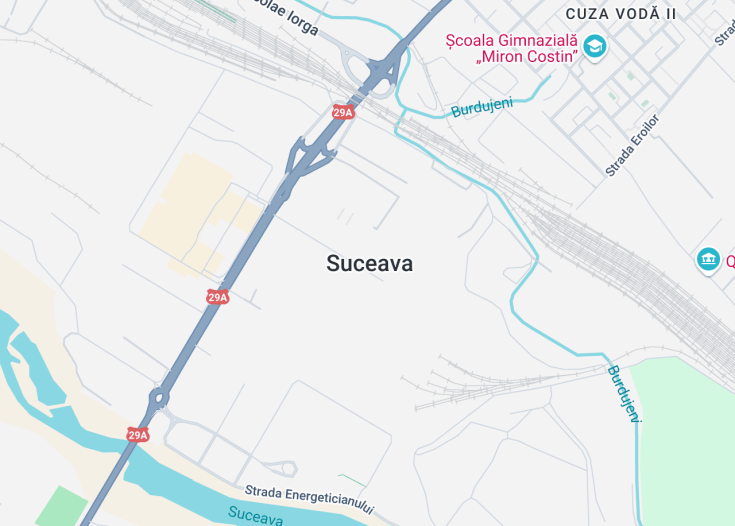Nestled in the picturesque landscapes of northeastern Romania, Suceava is a historical gem that boasts a rich heritage and scenic beauty. Known as the capital of the Principality of Moldavia in the medieval times, Suceava is home to the UNESCO-listed Painted Monasteries, renowned for their intricate frescoes and Byzantine art.
The city offers visitors a unique blend of cultural richness, ancient architecture, and natural splendor, making it a captivating destination for history enthusiasts and nature lovers alike.
For an immersive experience, plan your visit around the Suceava Days festival, which showcases local culture, crafts, and medieval history through various engaging events.
Don’t miss a visit to the Fortress of Suceava, a significant historical site, to gain deeper insights into Moldavia’s formidable past and architectural heritage.
Suceava: A Gateway to History and Culture
| Country | Romania |
| Time in Suceava | GMT+2 |
| Language spoken | Romanian |
| Population | 92,121 (according to the 2021 census) |
| Currency | Romanian Leu (RON) |
| Airports |
|
Suceava, a city rich in history and tradition, sits in the northeastern part of Romania, known primarily for its medieval past and beautiful monasteries. Historically, it was the capital of the Principality of Moldavia from 1388 until 1565 and played a pivotal role during the late Middle Ages. Today, Suceava beckons with a blend of historical sights and natural beauty, drawing visitors who come to explore its ancient fortresses and scenic landscapes.
Suceava’s most famous landmark, the Fortress of Suceava, dates back to the early 14th century and served as a strong defensive point during tumultuous times. Nowadays, it is a prime attraction for those interested in Romania’s feudal history and architecture. Besides the fortress, the city is a gateway to the famous Painted Monasteries of Bukovina, listed as UNESCO World Heritage sites, celebrated for their beautifully detailed frescoes that depict various biblical scenes.
Moreover, Suceava continues to be a focal point for cultural gatherings, including traditional dance, music festivals, and crafts fairs that preserve and disseminate Romanian folk culture. The city’s museums, like the Bukovina Museum, offer in-depth insights into the regional history, art, and ethnography, making Suceava a compelling study for both historians and tourists alike.
Where is Suceava?
Situated in northeastern Romania, Suceava is a historic city known for its medieval monuments.
Distances:
| Route | Distance by car | Time by car |
|---|---|---|
| Bucharest to Suceava | 280 mi | 5 hrs 30 min |
| Iasi to Suceava | 88 mi | 2 hrs 20 min |
| Cluj-Napoca to Suceava | 227 mi | 4 hrs 50 min |
What is Suceava famous for?
Suceava is renowned for its rich history, particularly as the former capital of Moldavia and for its preserved medieval fortresses like the Fortress of Suceava and nearby UNESCO heritage Painted Monasteries of Bukovina.
History
Pre-Medieval Era
Archaeological evidence suggests that the area known today as Suceava has been inhabited since the Paleolithic era. During the Neolithic and the Bronze Age, multiple cultures including the Cucuteni-Trypillia thrived here, renowned for their unique patterns in pottery and extensive settlement structures.
14th – 16th Century: Founding and Rise as a Political Center
Officially, Suceava’s history as a fortified settlement begins in 1388 under the rule of Petru II of Moldavia. It rapidly grew in prominence, serving as the capital of the Principality of Moldavia from 1388 until 1565. Notable for its architectural developments, Suceava saw the construction of the robust Fortress of Suceava, intended to fend off invasions from the Ottoman Empire and the Tatars.
17th Century – 19th Century: Periods of Conflict and Decline
The city’s status as a military and administrative center waned following the moving of Moldavia’s capital to Iași. During this period, Suceava suffered from numerous invasions and a gradual economic decline. However, the 18th and 19th centuries marked a slow recovery, aided by the region’s incorporation into the Habsburg Empire and later into Romania.
20th Century to Present: Reconstruction and Modern Development
Having been heavily affected during the two World Wars, the city underwent significant redevelopment in the Communist era. Post-1989, Suceava’s economy diversified and modernized; today, it stands as a vibrant cultural hub, with palpable remnants of its rich historical past resonating alongside contemporary developments. Cultural renaissance projects, restoration of historic sites, and enhancement of tourism infrastructure mark Suceava’s transition into a modern European city.
Visit Suceava
What to see and do in Suceava, Romania
The city of Suceava offers a blend of historical and cultural attractions. The Fortress of Suceava stands as a primary landmark, showcasing medieval Moldavian architectural prowess.
The Bucovina Village Museum provides insights into traditional Romanian folk life, while the Suceava Monasteries, part of the UNESCO World Heritage sites, display intricate frescoes and serene landscapes. For nature enthusiasts, hiking trails in the nearby forests provide a perfect escape into nature.
- Explore the Fortress of Suceava
- Visit the Bucovina Village Museum for a taste of traditional life
- Tour the UNESCO-listed Suceava Monasteries
- Enjoy hiking in the lush surroundings
Festivals and Events in Suceava
Throughout the year, Suceava is vibrant with cultural and historical festivals. The Suceava Days in June celebrate the town’s heritage with music, dance, and medieval reenactments, while the Bucovina Rock Castle festival in August offers an exhilarating mix of rock music in the historical setting of the Suceava Fortress.
Best time to visit Suceava
The best times to visit Suceava are late spring (May-June), when the weather is warm and the city celebrates Suceava Days, or early autumn (September-October), providing comfortable temperatures and smaller crowds ideal for exploring museums and historical sites.
Is Suceava worth visiting?
Yes, Suceava is definitely worth visiting for anyone interested in history, culture, and nature. The city offers a unique insight into the medieval history of Romania, housing several well-preserved monuments and sites.
Additionally, the surrounding natural landscapes and the warm local hospitality make Suceava an endearing destination that promises both educational and relaxing experiences.









